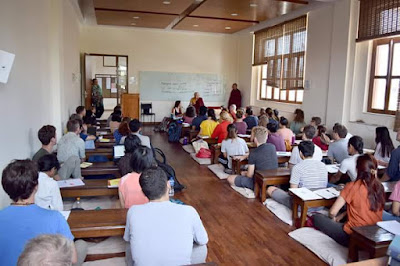No, I don’t live in Tibet.

For my family back in the west, in their minds “living in Nepal and studying Buddhism” is defined as “studying this crazy ancient philosophy, under the guidance of elderly monks (who would never in their life eat meat) and practice kungfu – in Tibet”. A girl at work gently reminded me how Buddhists- especially the monks- do not eat meat . As great as it sounds, in reality as all of us who study at RYI know, this is really just not the case. Somehow for them ‘Ne paul ’ is a country very much off their mental radar. I am frequently asked by distant family members who have heard rumours of ‘someone in their family’ who lives in Nepal. “What’s it like living in Tibet?” they say. And once I finally convince them I actually live in Nepal, they ask where it is. It’s like when we hear names of countries such as Mali or Angola, we know they are in Africa, however many of us do not know exactly where. Once I explain it’s a tiny country, smaller than the UK, tucked nicely between India an...













